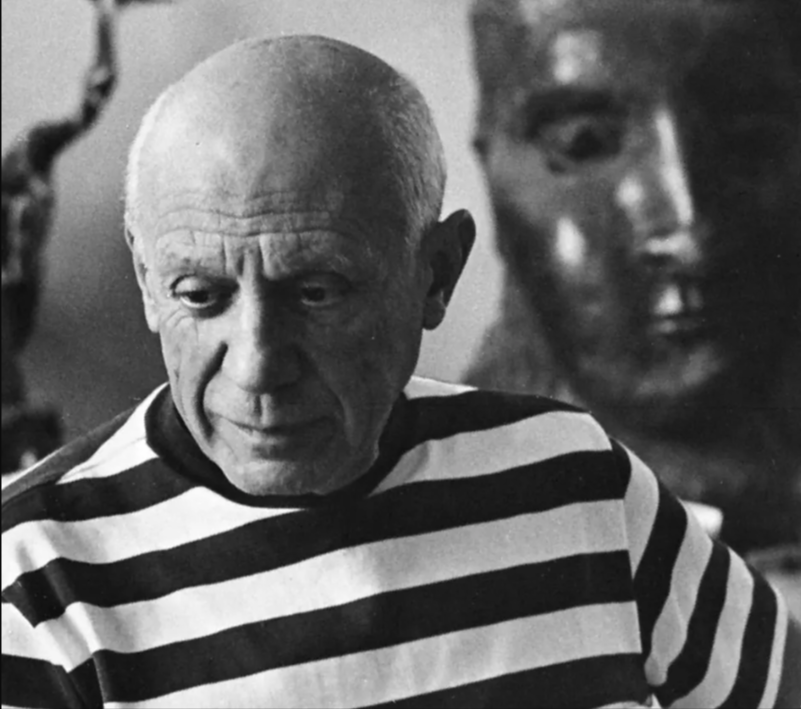Dive into the extraordinary life of Pablo Picasso, the genius who revolutionized modern art! From his humble beginnings to becoming a household name, discover the story behind his groundbreaking creations, his family roots, and the education that shaped his unparalleled artistic journey. Let’s explore the man behind the masterpieces!

Read Also: Mubarak Bala Biography: Age, Wife, Parent, Atheist & State
Pablo Picasso Biography
Pablo Picasso, born on October 25, 1881, in Málaga, Spain, is regarded as one of the most influential and revolutionary artists of the 20th century. A prodigious talent from a young age, Picasso was deeply influenced by his father, a painter and art teacher. After rigorous academic training, Picasso’s restless creativity led him to break free from traditional artistic conventions. He co-founded the Cubist movement, pioneering a style that fragmented objects into abstract shapes and reimagining how we perceive depth and form. Works like Les Demoiselles d’Avignon and Guernica showcased his mastery of both innovation and emotion, blending groundbreaking techniques with powerful social commentary.
Throughout his prolific career, Picasso constantly reinvented himself, exploring various artistic phases, including the Blue Period, Rose Period, and his later experiments with surrealism and sculpture. Beyond painting, he was a skilled sculptor, printmaker, and ceramicist, leaving a lasting legacy across multiple mediums. His work reflected not just his personal experiences but also the socio-political upheavals of his time, including war, love, and human suffering. Picasso’s genius reshaped the art world, and his influence endures in the way artists challenge norms and push creative boundaries. He passed away on April 8, 1973, in Mougins, France, leaving behind a monumental body of work that continues to inspire and provoke.
Family and Early Life
Pablo Picasso was born into an artistic and academic family on October 25, 1881, in Málaga, Spain. His father, Don José Ruiz y Blasco, was a painter and art professor who specialized in naturalistic depictions of birds and animals, and he played a pivotal role in nurturing Pablo’s artistic talents. Picasso’s mother, María Picasso y López, supported his early artistic endeavors, and her maiden name would later become synonymous with his iconic works. From an early age, Picasso exhibited extraordinary artistic abilities, creating detailed sketches and paintings that far exceeded his years. Recognizing his talent, his father began formally teaching him at just seven years old, instilling in him the technical skills and discipline that would shape his early work.
The family’s frequent moves, including a pivotal relocation to Barcelona in 1895, exposed Picasso to new artistic opportunities and environments. In Barcelona, Picasso attended the School of Fine Arts, where his prodigious talent quickly set him apart from his peers. His ability to master classical techniques and his intense passion for experimenting with different styles and subjects became evident. Despite facing the challenges of adapting to new cities and schools, Picasso’s family provided a strong foundation of support, fostering the confidence and creative freedom that allowed him to thrive. These early experiences laid the groundwork for Picasso’s later innovations and global artistic influence.
Education and Artistic Development
At a young age, Picasso trained under his father and later studied at prestigious schools like La Lonja in Barcelona and the San Fernando Royal Academy in Madrid. During this period, he absorbed influences from Spanish masters like El Greco and Diego Velázquez, laying the foundation for his distinct style.
Picasso’s Artistic Journey
Picasso’s career spanned multiple phases, including his iconic Blue Period, Rose Period, and the radical Cubist era. Works like La Vie showcased emotional depth, while collaborations with literary figures like Gertrude Stein and Guillaume Apollinaire expanded his creative horizons. His engagement with African sculpture and African art deeply influenced Cubism.
His partnerships with influential collectors, such as Ambroise Vollard, and connections with contemporaries like Henri Matisse and Juan Gris, further cemented his status in the art world.
Personal Life and Relationships
Picasso’s relationships profoundly influenced his life and art. His first wife, Olga Khokhlova, inspired several works, while muses like Marie-Thérèse Walter, Françoise Gilot, and Jacqueline Roque left lasting imprints on his masterpieces. Carlos Casagemas, a close friend, also played a significant role in shaping Picasso’s emotional artistry during his early career.
Legacy and Influence
Picasso’s groundbreaking works, such as Guernica and Les Demoiselles d’Avignon, remain among the most famous painting in the world. His impact on modern art extends beyond painting, as his experimentation in sculpture, ceramics, and printmaking influenced generations.
Today, institutions like the Musée Picasso in Paris, the Museu Picasso in Barcelona, and the Museo Picasso Málaga celebrate his achievements. His works are prominently displayed in renowned galleries, including the Metropolitan Museum of Art and the Art Institute of Chicago.
Conclusion
From young Picasso’s formative years to his revolutionary contributions to art history, Picasso’s journey reflects the evolution of modern creativity. His influence continues to resonate, inspiring artists and admirers worldwide. Through his unique style, emotional depth, and relentless innovation, Picassos work left a legacy that defines the essence of an artist.